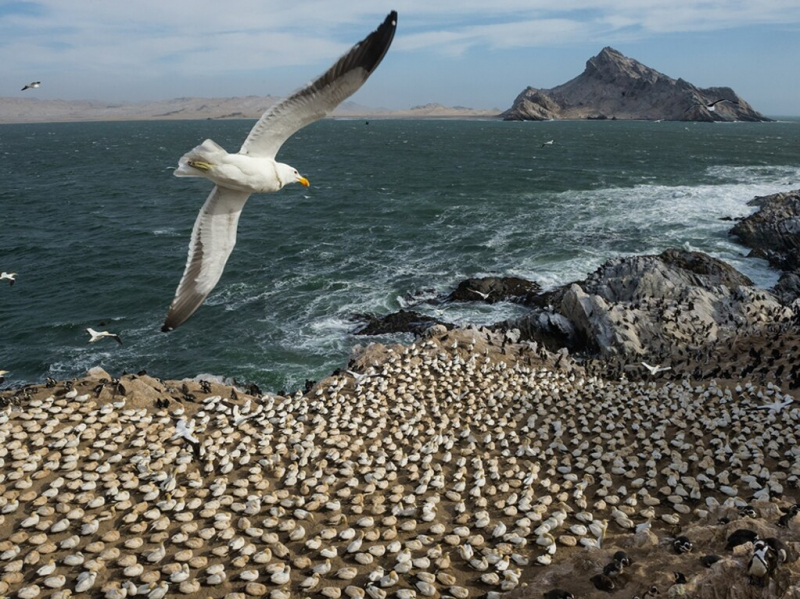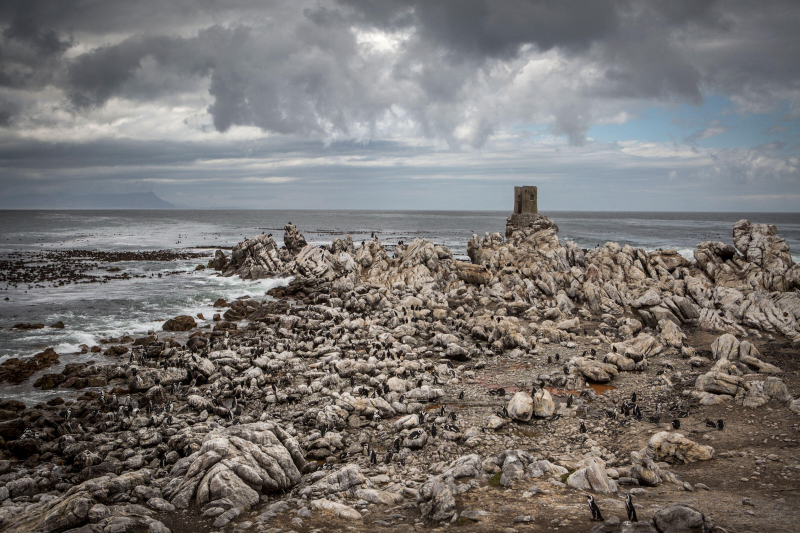Mercury Island
Mercury Island is among the best islands in Namibia and is situated 800 meters offshore in Spencer Bay, 110 kilometers north of Lüderitz. The island is only 750 meters long (North-South) and about 270 meters wide, reaching a height of 38 meters above the sea. Steep, rocky, without vegetation, covered in a thick layer of bird guano, and riddled with a number of caves (one of which completely bisects the island), Mercury Island's name comes from the shaking that reverberates through the island during westerly wave action. Its nearest neighbor and bird habitat are Ichaboe Island, about 65 kilometers to the south. Ichaboe and Mercury are the two most important island seabird breeding sites along the Namibian coast. Today the island has a permanent population in the form of a two-person bird research station. The station sits on the remains of a bird guano mining dock on the northeast side of the island.
Mercury Island has importance to wildlife. It is home to 16000 penguins, 1200 gannets, and 5000 cormorants, which range tens of kilometers out to sea and return to the island to breed. Birdlife International considers Mercury Island as an Important Bird Area (IBA). Indeed the four Namibian islands of Mercury, Ichaboe, Halifax, and Possession are critical for the breeding of a number of rare or endangered species of birds including the Cape gannets Morus capensis, the endangered African penguin Spheniscus demersus, and the crowned cormorants Microcarbo coronatus. Approximately 80% of the global population of the endangered bank cormorant Phalacrocorax neglectus breeds on Mercury Island and in the Ichaboe Islands. Migrating whales such as humpback whales and recovering southern right whales also visit the island during wintering seasons. There is a dwelling on Mercury Island, which is frequented by scientists and conservationists monitoring wildlife in the area.
Location: Atlantic Ocean






